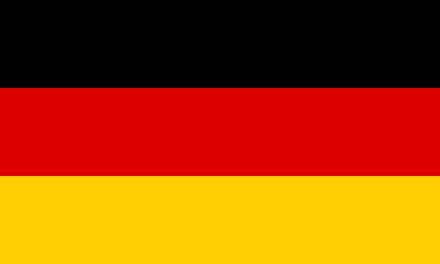Donate to Support Supercluster
Your support makes the Astronaut Database and Launch Tracker possible, and keeps all Supercluster content free.
SUPPORTSupercluster on Patreon
Your support makes the Astronaut Database and Launch Tracker possible, and keeps all Supercluster content free.
SUPPORTThis goes
to space
SARah 2 & 3
SARah-2 and -3
The SARah-2 and -3 satellites form the second component of the SARah system. These satellites will be based on the reflector-antenna technology of the SAR-Lupe satellites. They will fly in formation with SARah-1.
In July 2013, OHB System AG of Bremen, Germany signed a contract with Germany’s defense procurement agency (BAAINBw) to develop the SARah (Satellite-based Radar Reconnaissance System).
The plans call for an operation of the system in late 2019. The second generation satellite constellation of three spacecraft, two provided by OHB System AG and one by Airbus DS (former Astrium GmbH), will replace the current SAR-Lupe constellation of five spacecraft, and will be delivered to orbit by two Falcon 9 rockets of SpaceX. 1) 2)
Thanks to the SAR-Lupe system, the Federal Republic of Germany has had capabilities of an international standard in global satellite-based radar reconnaissance since 2007. Developed and built by OHB System AG, the system comprises five satellites and a ground station. It was delivered to the customer at the end of 2008 and has been operating reliably and successfully with the involvement of OHB System AG since then.
The contract governing the operation of SAR-Lupe expires in November 2017. In order to maintain its reconnaissance capabilities in the future, the Federal Republic of Germany is now planning the SARah follow-up system, which will be even more effective.
SARah will have a different architecture to SAR-Lupe with only three satellites in the space segment and two instead of one ground stations. Two of the three satellites will be based on the reflector technology which was developed for and has proven itself with SAR-Lupe and will be enhanced for SARah. It will be supplemented with a third satellite, which is a further development of the phased array technology developed by Astrium GmbH, which has also already proven itself in space and is currently being used on the civil satellite twins TerraSAR-X and Tandem-X. By linking these two radar technologies it will be possible to substantially enhance the efficiency of the overall system.
Under the contract signed, OHB System AG will be responsible for implementing the entire system as a prime contractor. In addition, OHB will be supplying the two reflector satellites and the main elements of the ground segment comprising the two ground stations. Under a subcontract, Astrium GmbH will be supplying the phased-array satellite and the related special functions for the ground segment.
Spacecraft
The Airbus-built "SARah-1" Earth observation satellite, under subcontract to OHB System AG, has been transported from Friedrichshafen, Germany, to Vandenberg, California, USA, and is currently being prepared for launch in June 2022 and subsequent operation by Airbus in space. 3)
SARah is a new operational reconnaissance system consisting of several satellites and a ground segment, which was developed on behalf of the German Bundeswehr. As the successor system, it replaces the SAR-Lupe system currently in service and offers significantly enhanced capabilities and system performance.
Overall responsibility for the complete SARah system lies with OHB System AG, Bremen, as prime contractor, which holds the main contract from the Federal Office of Bundeswehr Equipment, Information Technology and In-Service Support (BAAINBw). Airbus is the main subcontractor. The architecture of the overall SARah system consists of a space segment with three radar satellites (2 x OHB, 1 x Airbus) and a ground segment connected to two ground stations.
Airbus Defence and Space in Friedrichshafen developed the satellite with the latest, highest-resolution radar technology as well as jointly developing the ground segment to operate its own satellite. The company is also responsible for the launch, calibration and validation of the radar satellite, with final in-orbit delivery.
The radar instrument developed and built by Airbus features a sophisticated active phased array antenna and represents a further development of the Airbus-built TerraSAR, TanDEM-X and PAZ Earth observation satellites already successfully operating in orbit. This technology offers the advantages of very fast pointing and very flexible shaping of the antenna beam to deliver imagery in record time.
In general, radar satellites, with both passive and active antenna technology, allow observation of the Earth's surface regardless of the time of day or weather conditions.
Caption courtesy of ESA
Image courtesy of Astrium

On this
rocket
Falcon 9 (Block 5)
Falcon 9 is a reusable, two-stage rocket designed and manufactured by SpaceX for the reliable and safe transport of people and payloads into Earth orbit and beyond.
Falcon 9 is the world’s first orbital-class reusable rocket.
Stats
Completed missions: 462
Total landings: 417
Total reflights: 389
The Falcon 9 has launched 62 humans into orbit since May 2020
Specs
Height: 70 m / 229.6 ft
Diameter: 3.7 m / 12 ft
Mass: 549,054 kg / 1,207,920 lb
Payload to Low Earth Orbit (LEO): 22,800 kg / 50,265 lb
Payload to Geostationary Transfer Orbit (GTO): 8,300 kg / 18,300 lb
Payload to Mars: 4,020 kg / 8,860 lb
On January 24, 2021, Falcon 9 launched the first ride-share mission to Sun Synchronous Orbit. It was delivering a record-setting 143 satellites to space. And while this was an important mission for SpaceX in itself, it was also the moment Falcon 9 overtook United Launch Alliance’s Atlas V for the total number of consecutive successful launches.
SpaceX’s Falcon 9 had become America’s workhorse rocket, launching 31 times in 2021. It has already beaten that record this year, launching almost an average of once a week. While most of the launches deliver Starlink satellites to orbit, the company is still launching the most commercial payloads to orbit, too.
Falcon 9 is a medium-lift launch vehicle, with the capability to launch over 22.8 metric tonnes to low earth orbit. Unlike any other rocket, its first stage lands back on Earth after separating from its second stage. In part, this allows SpaceX to offer the cheapest option for most customers with payloads that need to reach orbit.
Under its ride-share program, a kilogram can be placed in a sun-synchronous orbit for a mere 1.1 million dollars, far cheaper than all other currently operating small satellite launch vehicles.
The reusability and fast booster turnaround times have made Falcon 9 the preferred choice for private companies and government agencies. This has allowed SpaceX to capture a huge portion of the launch market.
Photo courtesy of Jenny Hautmann for Supercluster.

From this
launch site
SLC-4E - Vandenberg Space Force Base, California
Space Launch Complex 4 (SLC-4) at Vandenberg Space Force Base is SpaceX’s west coast launch and landing facility, with its launch pad designated SLC-4E (the eastern-most of the two areas). Originally built in the early 1960s for Atlas-Agena rockets, the pad served that rocket line until 1967, when it was taken offline and rebuilt for Titan IIID rockets. From 1971 to 1988, SLC-4E launched Titan IIID rockets, after which it was reconfigured for Titan IV missions, which continued between 1991 and 2005.
In 2011, SpaceX leased SLC-4E and spent two years rebuilding the pad for its Falcon 9 rocket. From 2013 to 2019, the pad exclusively supported Falcon 9 polar missions. However, in 2020, SpaceX began splitting polar launches between Vandenberg and Cape Canaveral, after the Air Force lifted a 51-year ban on Florida-based polar launches, previously imposed due to the risk of overflying Cuba during launch. Despite these new opportunities from Florida, SpaceX plans to continue utilizing Vandenberg, with many more launches scheduled from this location.
Photo by Supercluster

Booster lands
here
Landing Zone 4 (LZ-4) - Vandenberg Space Force Base, California
Landing Zone 4 (LZ-4) is SpaceX’s only West Coast landing pad for the Falcon 9 first stage. Activated in 2018, the pad was constructed on the site of the former SLC-4W launch pad at Vandenberg Space Force Base in California.
SLC-4W was originally developed between 1963 and 1965 to support Atlas-Agena rocket launches and was located just 427 meters (1,400 feet) from SLC-4E. After the Atlas-Agena program ended, the pad was rebuilt for the Titan IIIB rocket program, which operated from 1966 to 1987. Following the retirement of the Titan IIIB, SLC-4W was reconfigured for Titan 23G rocket launches from 1988 to 2003.
In 2015, SpaceX leased SLC-4W, renaming it Landing Zone 4 and converting it into a dedicated landing site for Falcon 9 first stages. The first Return-To-Launch-Site landing of a Falcon 9 at Landing Zone 4 occurred on October 7, 2018, after the successful launch of the SAOCOM 1A satellite.
Photo courtesy of Pauline Acalin for Supercluster

GET THE SUPERCLUSTER APP
THE SUPERCLUSTER PODCAST
A podcast exploring the amazing milestones that changed space history, the wildest ideas that drive our future, and every development in this new Golden Age of Space.
Donate to support
Your support makes the Astronaut Database and Launch Tracker possible, and keeps all Supercluster content free.
SupportCOPYRIGHT 2021 SUPERCLUSTER LLC


